Jed Quiaoit
Samantha Himegarner
Jed Quiaoit
Samantha Himegarner
Skills you’ll gain in this topic:
- Differentiate between point mutations, insertions, deletions, and frameshifts.
- Explain how mutations impact proteins and lead to genetic variation.
- Predict mutation effects on phenotype and survival.
- Relate mutation rates to environmental factors and evolution.
- Analyze mutations’ roles in both genetic disorders and adaptation.
Genotype Change = Phenotype Change
Recall in earlier sections that a genotype refers to the genetic makeup of an organism, while the phenotype refers to the observable characteristics of an organism, such as its physical appearance, behavior, and biochemistry. The relationship between genotype and phenotype is complex, but generally changes in the genotype can result in changes in the phenotype.
One way that genotype can affect phenotype is through the function and amount of gene products. Gene products include proteins and RNA molecules that are encoded by genes and carry out specific functions in the cell. The normal function of these gene products collectively comprises the normal function of organisms. Disruptions in the genes that encode these products can result in new phenotypes. 😔
Examples
One example of this is cystic fibrosis, which is caused by mutations in the CFTR gene. The CFTR gene encodes a protein that is involved in ion transport across cell membranes. Mutations in this gene disrupt the normal function of the protein, leading to a buildup of thick, sticky mucus in the lungs and other organs. This can result in chronic lung infections, digestive problems, and other symptoms.
Another example is adaptive melanism in pocket mice. Melanism is an increased amount of pigmentation in the fur, which can be an adaptation to darker environments. A mutation in the MC1R gene that codes for a protein involved in pigmentation causes a switch from the normal phenotype of light fur to the new phenotype of dark fur in pocket mice. This adaptation is beneficial for mice living in dark areas of their natural habitat, as dark fur provides camouflage from predators.
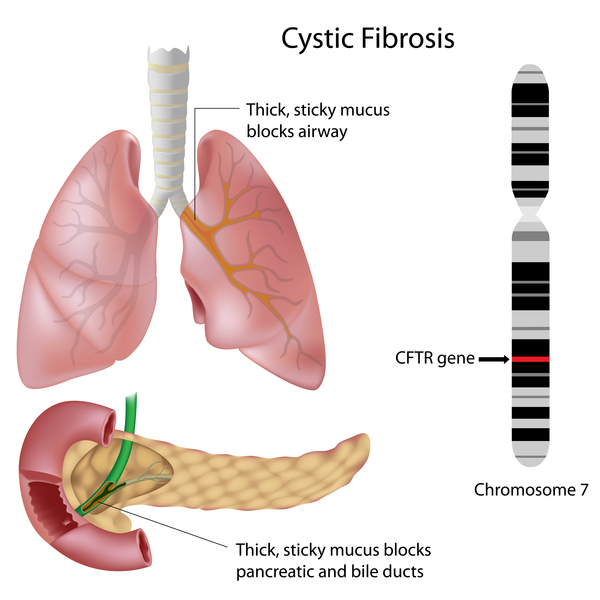
Source: Medline Plus
Mutations
Alterations in a DNA sequence, also known as mutations, can have a wide range of effects on the type or amount of protein produced by a gene, and in turn, the phenotype of an organism. The specific type of mutation and its location within the DNA sequence can affect the structure and function of the resulting protein. This can lead to changes in the normal function of the protein and the consequent phenotype. 🦋
Types Based on Position
One type of mutation is a point mutation, which is a change in a single nucleotide in the DNA sequence. Depending on the location of the mutation and the specific nucleotide change, this can affect the structure and function of the resulting protein.
For example, a point mutation in the exon of a gene can change the amino acid sequence of the protein, altering its shape and function. This can lead to a loss of function of the protein and a negative effect on the phenotype of the organism.
Another type of mutation is a insertion or deletion mutation, which is when a nucleotide is added or removed from the DNA sequence. This can cause a frameshift mutation, which can change the reading frame of the gene, altering the amino acid sequence of the resulting protein and leading to a different or non-functional protein. This can lead to a negative effect on the phenotype of the organism.
Types Based on Effect
On the other hand, some mutations may lead to a positive effect on the phenotype of the organism.
For example, a mutation in a regulatory region of a gene can increase the expression of the gene, leading to an increase in the amount of the protein produced. This can lead to a gain of function of the protein and a positive effect on the phenotype of the organism.
In some cases, mutations may have no effect on the phenotype of an organism. These are known as neutral mutations. These types of mutations may occur in non-coding regions of a gene or in regions of the gene that do not affect the structure or function of the protein.
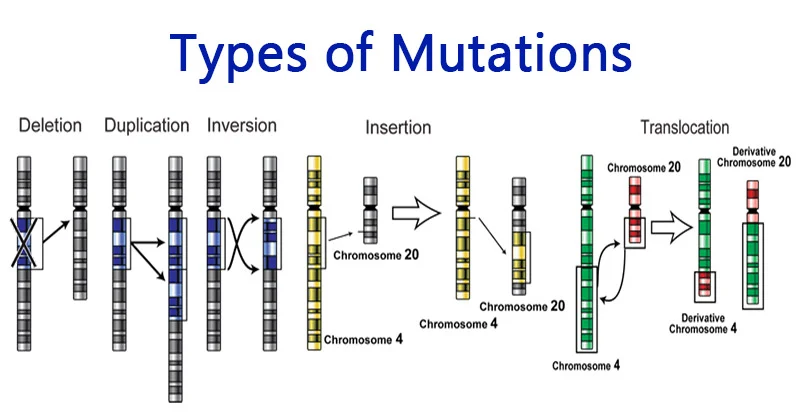
Source: The Biology Notes
Environmental Implications
Errors in DNA replication and DNA repair mechanisms, as well as external factors such as radiation and reactive chemicals, can cause random mutations in the DNA. These mutations can occur in any part of the DNA, including coding regions of genes, non-coding regions, and regulatory regions. The specific type of mutation and its location within the DNA can affect the structure and function of the resulting protein, leading to changes in the normal function of the protein and the consequent phenotype. 👨🔬
Whether a mutation is detrimental, beneficial, or neutral depends on the environmental context. For example, a mutation that causes a loss of function in a protein may be detrimental in one environment, but beneficial in another. A mutation that increases the expression of a gene may be beneficial in one environment, but detrimental in another.
Mutations are the primary source of genetic variation, the differences in DNA sequences among individuals in a population. Genetic variation is the raw material for evolution, as it allows natural selection to act on different variations, leading to the survival of the fittest. We'll learn more about evolution and natural selection in Unit 7 - stay tuned!
Errors in Mitosis and Meiosis = Phenotype Change
Errors in mitosis or meiosis, the processes by which cells divide to form new cells, can result in changes in the chromosome number, which can result in changes in the phenotype of an organism. 🧬
To recap:
- Mitosis is the process of cell division that results in two identical daughter cells, each with the same number of chromosomes as the parent cell.
- Meiosis is the process of cell division that results in four genetically diverse daughter cells, each with half the number of chromosomes as the parent cell. Changes in chromosome number often result in new phenotypes, including changes in the vigor and fertility of the organism. For example, polyploidy, a condition in which an organism has more than two sets of chromosomes, can lead to increased vigor in plants, but sterility in animals. Triploidy, a condition in which an organism has three sets of chromosomes, can lead to sterility in plants and animals. 🍓
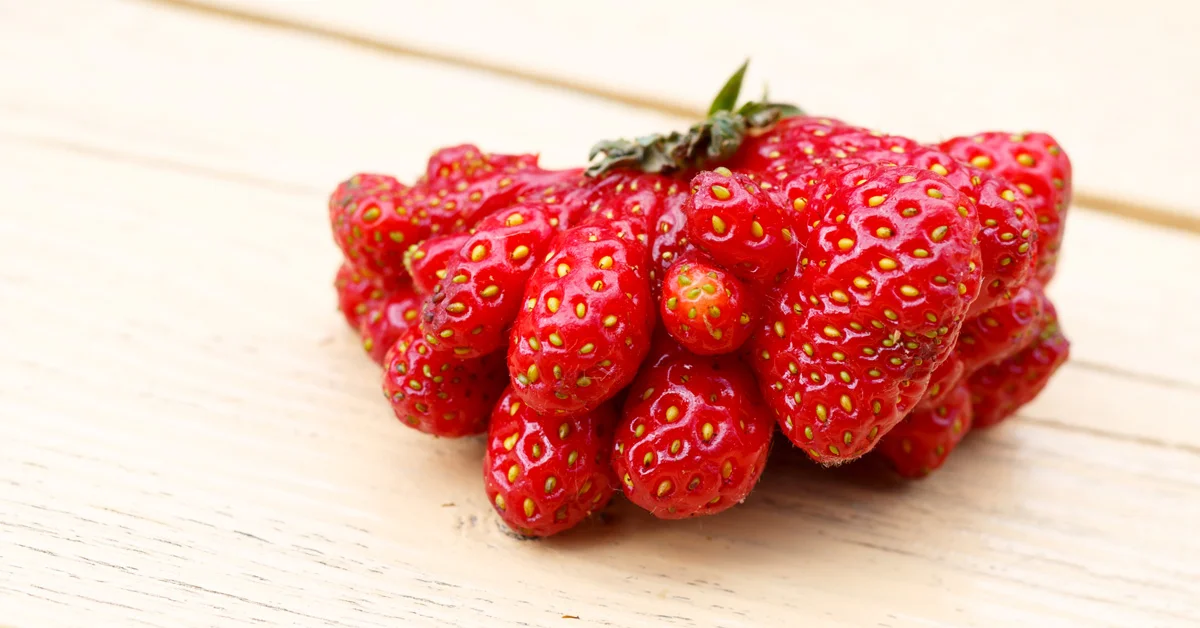
Source: Adobe
In humans, changes in chromosome number can result in a wide range of disorders with developmental limitations. Trisomy 21, also known as Down syndrome, is a condition in which an individual has three copies of chromosome 21, instead of the normal two copies. This results in a range of developmental and physical abnormalities, including intellectual disability and characteristic facial features.
Turner syndrome, meanwhile is a condition in which an individual has only one copy of the X chromosome, instead of the normal two copies. This results in developmental limitations, including short stature, and infertility.
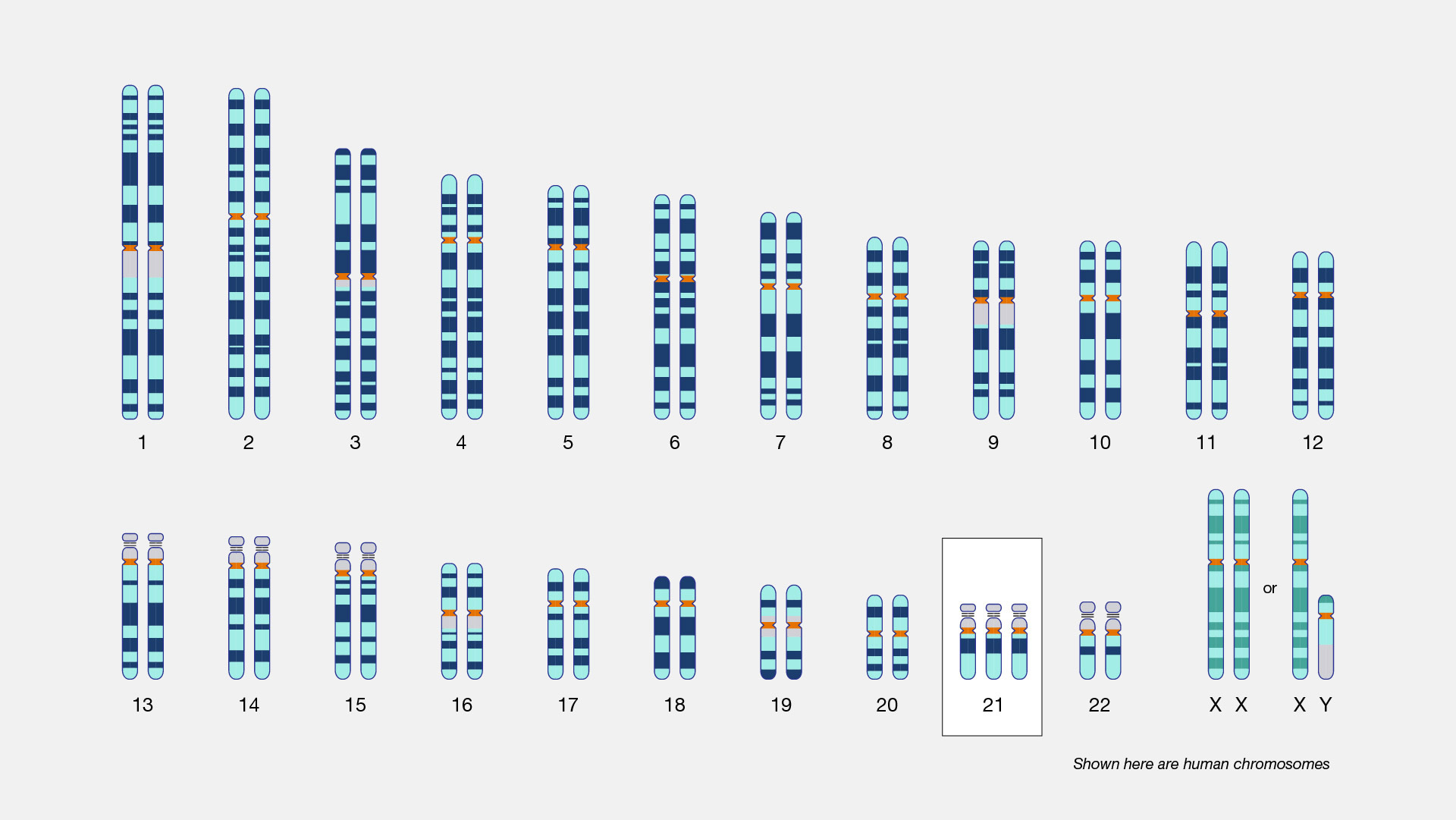
Source: National Human Genome Research Institute
Mutations and Genetic Variation
Changes in genotype may affect phenotypes that are subject to natural selection. Genetic changes that enhance survival and reproduction can be selected for by environmental conditions. In this way, organisms with beneficial genetic variations are more likely to survive and pass on their genetic traits to the next generation. Over time, the frequency of beneficial genetic variations can increase in a population. ⏰
One way that genetic variation can increase is through the horizontal acquisition of genetic information, primarily in prokaryotes.
This includes mechanisms such as:
- transformation (uptake of naked DNA)
- transduction (viral transmission of genetic information)
- conjugation (cell-to-cell transfer of DNA)
- transposition (movement of DNA segments within and between DNA molecules)
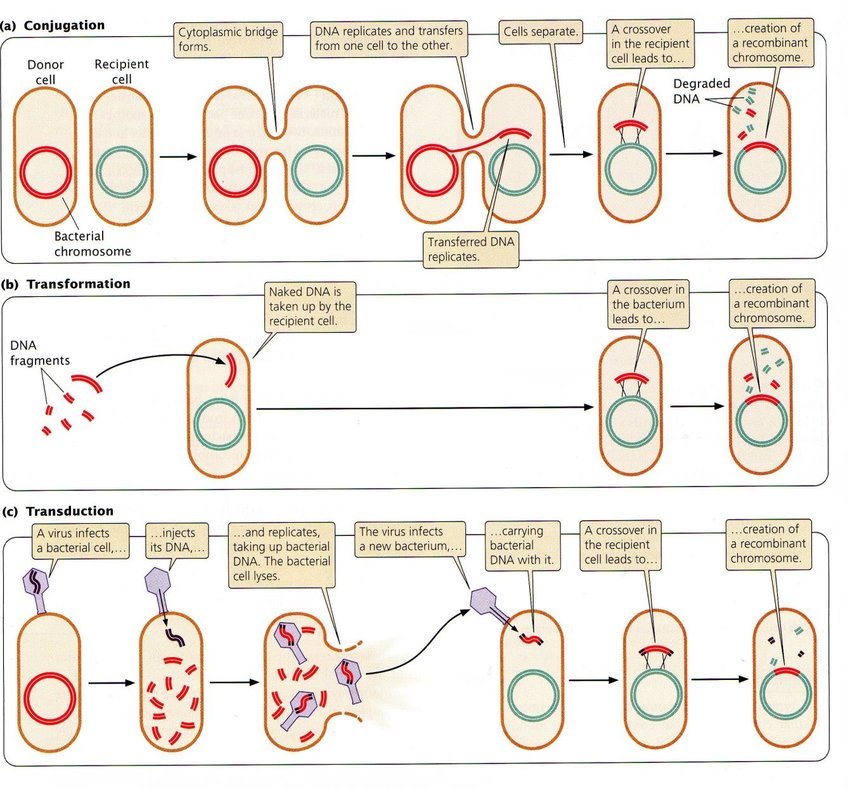
Source: ResearchGate
These mechanisms allow for the transfer of genetic information between different individuals and populations, increasing the variation in the gene pool.
Another way that genetic variation can increase is through the recombination of genetic information from related viruses if they infect the same host cell. This can lead to the formation of new viruses with different genetic characteristics.
Interestingly, reproductive processes that increase genetic variation are evolutionarily conserved and are shared by various organisms! 🍳
Examples
- Antibiotic resistance mutations in bacteria allow them to survive exposure to antibiotics, increasing their chances of survival and reproduction.
- Pesticide resistance mutations in insects allow them to survive exposure to pesticides, allowing them to reproduce and pass on their resistance to the next generation.
- Sickle cell disorder is a genetic disorder caused by a change in a single amino acid in the hemoglobin protein. This change causes the red blood cells to take on a sickle shape, which can lead to a range of health problems. However, individuals who are heterozygous for the sickle cell allele, meaning they have one normal allele and one sickle allele, have a reduced risk of developing malaria, and thus, have a survival advantage in certain environments.
Check out the AP BioUnit 6 Replays or watch the 2021 Unit 6 Cram
<< Hide Menu
Jed Quiaoit
Samantha Himegarner
Jed Quiaoit
Samantha Himegarner
Skills you’ll gain in this topic:
- Differentiate between point mutations, insertions, deletions, and frameshifts.
- Explain how mutations impact proteins and lead to genetic variation.
- Predict mutation effects on phenotype and survival.
- Relate mutation rates to environmental factors and evolution.
- Analyze mutations’ roles in both genetic disorders and adaptation.
Genotype Change = Phenotype Change
Recall in earlier sections that a genotype refers to the genetic makeup of an organism, while the phenotype refers to the observable characteristics of an organism, such as its physical appearance, behavior, and biochemistry. The relationship between genotype and phenotype is complex, but generally changes in the genotype can result in changes in the phenotype.
One way that genotype can affect phenotype is through the function and amount of gene products. Gene products include proteins and RNA molecules that are encoded by genes and carry out specific functions in the cell. The normal function of these gene products collectively comprises the normal function of organisms. Disruptions in the genes that encode these products can result in new phenotypes. 😔
Examples
One example of this is cystic fibrosis, which is caused by mutations in the CFTR gene. The CFTR gene encodes a protein that is involved in ion transport across cell membranes. Mutations in this gene disrupt the normal function of the protein, leading to a buildup of thick, sticky mucus in the lungs and other organs. This can result in chronic lung infections, digestive problems, and other symptoms.
Another example is adaptive melanism in pocket mice. Melanism is an increased amount of pigmentation in the fur, which can be an adaptation to darker environments. A mutation in the MC1R gene that codes for a protein involved in pigmentation causes a switch from the normal phenotype of light fur to the new phenotype of dark fur in pocket mice. This adaptation is beneficial for mice living in dark areas of their natural habitat, as dark fur provides camouflage from predators.

Source: Medline Plus
Mutations
Alterations in a DNA sequence, also known as mutations, can have a wide range of effects on the type or amount of protein produced by a gene, and in turn, the phenotype of an organism. The specific type of mutation and its location within the DNA sequence can affect the structure and function of the resulting protein. This can lead to changes in the normal function of the protein and the consequent phenotype. 🦋
Types Based on Position
One type of mutation is a point mutation, which is a change in a single nucleotide in the DNA sequence. Depending on the location of the mutation and the specific nucleotide change, this can affect the structure and function of the resulting protein.
For example, a point mutation in the exon of a gene can change the amino acid sequence of the protein, altering its shape and function. This can lead to a loss of function of the protein and a negative effect on the phenotype of the organism.
Another type of mutation is a insertion or deletion mutation, which is when a nucleotide is added or removed from the DNA sequence. This can cause a frameshift mutation, which can change the reading frame of the gene, altering the amino acid sequence of the resulting protein and leading to a different or non-functional protein. This can lead to a negative effect on the phenotype of the organism.
Types Based on Effect
On the other hand, some mutations may lead to a positive effect on the phenotype of the organism.
For example, a mutation in a regulatory region of a gene can increase the expression of the gene, leading to an increase in the amount of the protein produced. This can lead to a gain of function of the protein and a positive effect on the phenotype of the organism.
In some cases, mutations may have no effect on the phenotype of an organism. These are known as neutral mutations. These types of mutations may occur in non-coding regions of a gene or in regions of the gene that do not affect the structure or function of the protein.

Source: The Biology Notes
Environmental Implications
Errors in DNA replication and DNA repair mechanisms, as well as external factors such as radiation and reactive chemicals, can cause random mutations in the DNA. These mutations can occur in any part of the DNA, including coding regions of genes, non-coding regions, and regulatory regions. The specific type of mutation and its location within the DNA can affect the structure and function of the resulting protein, leading to changes in the normal function of the protein and the consequent phenotype. 👨🔬
Whether a mutation is detrimental, beneficial, or neutral depends on the environmental context. For example, a mutation that causes a loss of function in a protein may be detrimental in one environment, but beneficial in another. A mutation that increases the expression of a gene may be beneficial in one environment, but detrimental in another.
Mutations are the primary source of genetic variation, the differences in DNA sequences among individuals in a population. Genetic variation is the raw material for evolution, as it allows natural selection to act on different variations, leading to the survival of the fittest. We'll learn more about evolution and natural selection in Unit 7 - stay tuned!
Errors in Mitosis and Meiosis = Phenotype Change
Errors in mitosis or meiosis, the processes by which cells divide to form new cells, can result in changes in the chromosome number, which can result in changes in the phenotype of an organism. 🧬
To recap:
- Mitosis is the process of cell division that results in two identical daughter cells, each with the same number of chromosomes as the parent cell.
- Meiosis is the process of cell division that results in four genetically diverse daughter cells, each with half the number of chromosomes as the parent cell. Changes in chromosome number often result in new phenotypes, including changes in the vigor and fertility of the organism. For example, polyploidy, a condition in which an organism has more than two sets of chromosomes, can lead to increased vigor in plants, but sterility in animals. Triploidy, a condition in which an organism has three sets of chromosomes, can lead to sterility in plants and animals. 🍓

Source: Adobe
In humans, changes in chromosome number can result in a wide range of disorders with developmental limitations. Trisomy 21, also known as Down syndrome, is a condition in which an individual has three copies of chromosome 21, instead of the normal two copies. This results in a range of developmental and physical abnormalities, including intellectual disability and characteristic facial features.
Turner syndrome, meanwhile is a condition in which an individual has only one copy of the X chromosome, instead of the normal two copies. This results in developmental limitations, including short stature, and infertility.

Source: National Human Genome Research Institute
Mutations and Genetic Variation
Changes in genotype may affect phenotypes that are subject to natural selection. Genetic changes that enhance survival and reproduction can be selected for by environmental conditions. In this way, organisms with beneficial genetic variations are more likely to survive and pass on their genetic traits to the next generation. Over time, the frequency of beneficial genetic variations can increase in a population. ⏰
One way that genetic variation can increase is through the horizontal acquisition of genetic information, primarily in prokaryotes.
This includes mechanisms such as:
- transformation (uptake of naked DNA)
- transduction (viral transmission of genetic information)
- conjugation (cell-to-cell transfer of DNA)
- transposition (movement of DNA segments within and between DNA molecules)

Source: ResearchGate
These mechanisms allow for the transfer of genetic information between different individuals and populations, increasing the variation in the gene pool.
Another way that genetic variation can increase is through the recombination of genetic information from related viruses if they infect the same host cell. This can lead to the formation of new viruses with different genetic characteristics.
Interestingly, reproductive processes that increase genetic variation are evolutionarily conserved and are shared by various organisms! 🍳
Examples
- Antibiotic resistance mutations in bacteria allow them to survive exposure to antibiotics, increasing their chances of survival and reproduction.
- Pesticide resistance mutations in insects allow them to survive exposure to pesticides, allowing them to reproduce and pass on their resistance to the next generation.
- Sickle cell disorder is a genetic disorder caused by a change in a single amino acid in the hemoglobin protein. This change causes the red blood cells to take on a sickle shape, which can lead to a range of health problems. However, individuals who are heterozygous for the sickle cell allele, meaning they have one normal allele and one sickle allele, have a reduced risk of developing malaria, and thus, have a survival advantage in certain environments.
Check out the AP BioUnit 6 Replays or watch the 2021 Unit 6 Cram

© 2025 Fiveable Inc. All rights reserved.